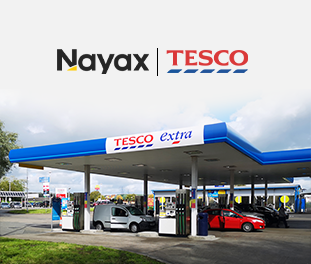If you look at the evolution of the retail industry, in the beginning, there were brick-and-mortar stores. After which came direct sales catalogs, teleshopping networks, television home shopping, online shopping websites, text message marketing, emails, search engine ads, mobile apps, social media platforms, and so on. So much so that today, you can shop online via an instant messaging service like Whatsapp or WeChat!

The rapid digital disruption in the last few years has completely changed both the retail business and the behavior of the shoppers. It is in this rapidly-evolving consumer environment that omnichannel retail has become the absolute baseline.
It is what most modern and successful companies are doing. And it is what you need to do if you want to keep up with the competition. But first, let’s understand what omnichannel retailing is all about…
What is omnichannel retailing?

Most retailers begin with a single channel to sell their merchandise, setting up either a physical store or an online marketplace. Then, they diversify to other retail channels, such as a social media platform or a comparison shopping engine. This is known as multi-channel retail.
Omnichannel retail is an improvised version of this multi-channel approach to sales. According to Frost and Sullivan, omnichannel retailing is all about creating seamless and effortless, high-quality customer experiences that occur within and between contact channels.
Buyers have multiple purchasing paths and touchpoints – both online and offline – along their customer journey. A holistic omnichannel retail strategy ensures that from the first time a buyer discovers your brand, to the time they make the final purchase, the communication strategy remains consistent.
This means that with omnichannel retail, the customer journey management is done via a centralized data platform that integrates different communication channels together. In the real world, an omnichannel retail experience would look something like this:
Mary uses her phone to research for a new television. An interaction with a chatbot tells her that the model she likes is available in her local store. When Mary visits the shop the next day, the customer service manager takes her directly to the product demo. Mary decides to wait for a discount, and finds one after a few days while browsing Facebook. She makes the purchase online, while signing up for the brand’s emails. She’s delighted to receive an email recommending an extended warranty offer on the TV.
Why does an omnichannel retail strategy matter?
![]()
Omni-channel retail is important because you do not want to give your customer a disjointed purchasing experience and lead them to your competitors.
With technological advances blurring the boundaries between traditional and online retailing, more than 70% of customers use multiple channels during their buying journey. And according to a study published in Harvard Business Review (HBR), these omnichannel customers spend an average of 4% more on every shopping occasion in-store and 10% more online than single-channel customers.
What is even more compelling is the finding that the more channels a customer interacted with, the more they spent in the store. For example, the customers who used more than 4 channels spent, on average, 9% more than those who used just one channel.
Omni-channel customers also tend to be repeat shoppers, the HBR study finds. They are more likely to recommend a brand to family and friends than those who use a single channel. As such, businesses can gain significant economic value and customer loyalty by streamlining the shopping experience across digital channels as well as brick-and-mortar stores.
No wonder then that more than 45% of retail executives surveyed in 2020 by BigCommerce said they plan to increase their investment in omnichannel retailing moving forward.
Ask us about our omnichannel solutions
Advantages of omnichannel retailing

The biggest benefit of adopting an omnichannel retail strategy is customer satisfaction because you would be giving customers what they want. Research shows that nine out of 10 shoppers want an omnichannel experience. Similarly, 72% of consumers expect brands to know their buying history, irrespective of the communication method.
Not only does breaking down the walls between multiple sales channels allow customers to interact with a business in a more natural way, but it also leads to an increase in sales and conversions.
According to the Unified Commerce Index research report, globally, omnichannel consumers who regularly buy from a retailer – both online and in-store – spend 30% more per purchase than those who shop on just one sales medium.
What’s more, brands with an omnichannel retail strategy successfully retain, on average, 89% of their customers. In comparison, businesses with weak omnichannel engagement are able to retain only 33% of their customers.
Also, since retailers are able to track consumers across channels, an omnichannel retail system provides businesses with better customer data. This data then gets translated into customer insights, with which businesses can create personalized and even more persuasive communication strategies to encourage consumers to shop more – not just online but also in stores.
Disadvantages of omnichannel retailing

Sometimes, in order to make themselves seen everywhere the customer is, brands spread themselves too thin. Meeting the customer at every touchpoint and buying path is neither easy nor inexpensive. Since each channel comes with an expense, multiple channels could often lead to smaller margins. The focus, instead, should be on delivering a harmonized buying experience across the channels that actually matter to the target audience.
And let’s not forget that when you dive into multiple sales channels, you open the door to many more competitors. In such a scenario, it becomes all the more important to incentivize customers to choose your brand. Some businesses like to offer discounts for ‘online purchases and in-store pickup’, while others honor customer loyalty with special prices.
The truth is, an omnichannel retail strategy is not as simple or straightforward as other marketing strategies. From understanding the customer behavior to creating a communication plan in which all the channels talk to each other, implementing an omnichannel system can be quite complicated in the beginning.
But once you execute this retail strategy successfully, the customer insights from an omnichannel system can provide you with the utmost benefits in sales, customer loyalty, and differentiation from the competition.
Mapping the omnichannel customer journey

The success of an omnichannel retail strategy lies in seamless customer transitions, or handoffs, across digital and live channels. As such, you need to design a plan for end-to-end customer journey management, keeping in mind that consumer preferences are as dynamic as the retail environment we live in.
To that end, management consulting firm McKinsey recommends identifying which buying journeys are most important in terms of the cost of the journey to the business, the complexity involved in enhancing the journey, and how significant the journey is to the customer.
Typically, in an online purchase, the customer journey will span several stages and channels and each stage will require a unique style of engagement with the customer. Once you determine which sales mediums your customer is leveraging to engage with your business at different stages in the buying journey, you can work to provide a consistent experience, which is paramount to customer satisfaction.
For instance, a customer journey may begin online with researching about products, but then, the customer could reach out to a live agent to get more information about stock availability. After this, he or she may compare prices online through a mobile app, and purchase the product using their laptop. They may then call a live agent to confirm the order status and the delivery time. All of these movements must be seamless for a successful omnichannel customer journey.
Ask us about our omnichannel solutions
Extracting value from omnichannel customer insights

While mapping the customer journey is important to ensure that consumers do not ditch you for a competitor that provides better customer experience, brands can also analyze their data to gain greater insights into their consumers.
The consumer data from your omnichannel system will help you to answer questions like:
- What are the most searched products on your site?
- From which geographical locations is the website/app traffic arriving?
- What is the age group of top visitors?
- What devices are people using to visit the website or social media channels?
- What are the peak days for online activity among your audience?
- Are there any bottlenecks hindering the customer journey?
It’s important to remember that the journey must continue even after a customer has decided to make a purchase. As HBR estimates, only 16%of businesses are focused on customer retention, even though it costs at least five times more to acquire a new customer than to retain an existing one.
The insights gained during the earlier touchpoints in the customer journey can help to define the post-purchase relationship with the customer. For example, if a customer has purchased a high-end camera, you can send them follow-up offers for different kinds of compatible lenses or camera accessories.
Role of brick-and-mortar in omnichannel retail

In the second quarter of 2020, with most of the world under lockdown due to the COVID-19 pandemic, e-commerce retail sales in the United States grew by almost a third (31.8%) from the previous quarter, or 44.5% year over year, according to the Census Bureau of the Department of Commerce. But even then, these sales represented only about 16% of all US retail sales in Q2.
The fact that a vast majority of retail sales still happened offline, even at the height of a global pandemic, is testimony enough that brick-and-mortar stores are not going anywhere. Physical stores are the end-point of buy-online-pickup-in-store (BOPIS) and buy-online-pickup-at-curb (BOPAC) customer journeys. Consumers often prefer to ‘click and collect’ because it saves time.
At the end of the day, omnichannel retailing is all about providing comfort and convenience to the customers. It comes as little surprise then that Starbucks is planning to close 400 stores in North America by the end of 2021 and open 300 new, smaller stores with a focus on mobile order pickup and takeaway.
Impact of omnichannel retail on supply chains

From a customer’s point of view, there are two key components to omnichannel retailing – convenience and instant gratification. While convenience refers to the amount of effort customers are required to expend in order to make a purchase, instant gratification is measured in terms of how long customers are willing to wait to receive a product.
If more buyers value convenience over cost and environmental impact, a greater share of omnichannel retail will go towards home delivery networks. This would translate into an increase in the spending on transportation and reduced spending on facilities and inventory.
But, if more customers opt for instant gratification, retailers will need to invest in transportation channels, warehouse facilities, and inventory alike. This is because quick, last-mile delivery limits a business’ ability to aggregate orders into a single vehicle.
Meanwhile, if more customers decide to utilize the ‘buy online, pickup in-store option, not only will businesses have to locate showrooms closer to the customer hotspots, but they will also need to provide greater options for product customization.
As such, building a successful omnichannel portfolio will require a significant change in the supply chain and logistics network for most retailers. This network will be influenced by the evolution in customer preferences, as well as production and transportation technologies.
Cashless payments in an omnichannel world

Another trend that has emerged as a result of omnichannel customers demanding convenience is that of customer-oriented cashless payment solutions.
The payments landscape is quickly evolving. The conventional challenges of security, trust, and ease of use are quickly being overcome by technological enhancements, user-friendly cashless card readers, and mobile payment apps.
According to a Deloitte report, having the right cashless payment solution in place has become critical to driving sales in an omnichannel environment. It is not uncommon for potential buyers to drop their purchase and leave the site if payment methods are cumbersome or if there is a lack of payment options
Customer-focused businesses not only support all major payment types, but they also provide customers with a breakdown of purchase order costs (shipping, order summary, VAT, etc.). They also make their payment options a revenue driver by implementing loyalty programs and offering discounts, bonus credits, and cashback.
Ask us about our cashless solutions
Barriers to omnichannel retail

One of the biggest barriers to more widespread implementation of omnichannel retail is the cost and complexity associated with a customer journey management technology stack.
While brick-and-mortar stores traditionally have customized in-store POS systems, once you start selling on multiple channels, you would want a real-time, unified view of every piece of inventory. You would also require a single database of all product information to negate the need of entering details on each individual channel where you sell.
Since a great deal of investment goes into implementing something on a company-wide scale, omnichannel retail necessitates serious commitment not just from the decision-makers at the top, but also all major stakeholders across the enterprise.
Moreover, selling across multiple channels and devices will bring in more questions from a wider pool of potential buyers. This means you will need to upgrade your customer service game too. Successful omnichannel retailing mandates an outstanding in-person, email, as well as online customer service program.
Building an omnichannel retail strategy

If we were to speak in broader terms, building an omnichannel strategy would be a five-step process.
- Understand the customer: Invest time into researching your target audience’s personas, interests, behaviors, and needs. Instead of making assumptions, solicit feedback and conduct social media polls and surveys.
- Understand the channels: To reiterate, omnichannel retail does not mean you have to establish a presence on all possible channels. Find out where your customers are and focus on those mediums.
- Establish purpose: Not all channels can do everything. For example, while you may share product information videos on Instagram, you may want to use Twitter to share news updates.
- Establish connection: Now, this is the part that cannot be executed without the right technology. You need to connect all channels to be able to follow your customer across all touchpoints.
- Maintain what you have built: In omnichannel retailing, downtime is not an option. You need to keep on testing new strategies and improving your approach to build customer loyalty.
Examples of outstanding omnichannel retailing

It’s one thing to discuss omnichannel retail and customer journey management in theory, but it’s an entirely different thing to see it being implemented successfully in the real world. Thankfully, there are several companies that you can look to for inspiration.
Bank of America, for example, has enabled its mobile and desktop apps to handle everything from check depositing to appointment scheduling.
In the UK, fashion retailer Oasis has armed its sales associates with iPads, so that they can offer on-the-spot, accurate, and up-to-date product information to customers. And if something is out of stock, the staff has the authority to place an online order to be delivered directly to your home.
Additionally, beauty giant Sephora has stocked its stores with mobile tablets that let shoppers look up their purchase history, access product details, and try on new items virtually. If they like something, they can add it to a wish list and use the same tablet to make a purchase.
Also noteworthy is Pepperfry, a home furnishings company that has blended its online store with an immersive in-person experience. Customers can look for furniture they like online and then travel to a ‘Studio Pepperfry’ to see what the products look like in real life. A design consultant, meanwhile, gives them a tour and offers advice to ensure that customers don’t experience buyer’s remorse.
Omnichannel retail in a post-COVID world
While the examples above sum up perfectly how companies of all sizes can leverage omnichannel retail, navigating the COVID-19 crisis expertly will require retailers to address some major challenges.
Besides the obvious fear of contracting the coronavirus, the economic consequences of the virus have also been widespread. Rising unemployment and unusual circumstances means that not all types of marketing messages will resonate with all types of consumers.
Therefore, it is important to empathize, communicate how you are working to ensure the safety of your employees and customers, and even offer discounts, if you can. And if you are one of the companies who have been affected by the disruptions in global supply chains, ramp up your customer service and promptly inform your customers of expected delays and updated delivery estimates.
The pandemic has also changed consumers’ product priorities. As such, while some products have witnessed a boom, many non-essentials have suffered a major setback. In such a scenario, it would be prudent to gauge the shift in customer sentiment by listening to both the buyers and customer-facing employees.
Meanwhile, do not forget to make a good first impression on the glut of first-time online shoppers. Their customer loyalty is up for grabs and if you provide an experience that is friendly, intuitive, and anxiety-reducing, you will expand your consumer base significantly.
Summing up

Omni-channel retail is all about the amalgamation of brick-and-mortar stores, online marketplaces, social media channels, and more. While on one hand, a seamless customer experience across multiple sales channels can increase sales and profitability for a retailer, on the other hand, it increases customer loyalty and improves customer retention.
In today’s post-COVID retail environment, an omnichannel retail strategy can help businesses pursue their sales goals despite any remaining restrictions.
To get the best out of your omnichannel retail strategy, it’s important to identify the right customers on the right channels, invest in an effective customer journey management platform, offer the convenience of cashless payments and quick delivery, and ramp up your customer service program.
Learn how Nayax can help by contacting us here.



